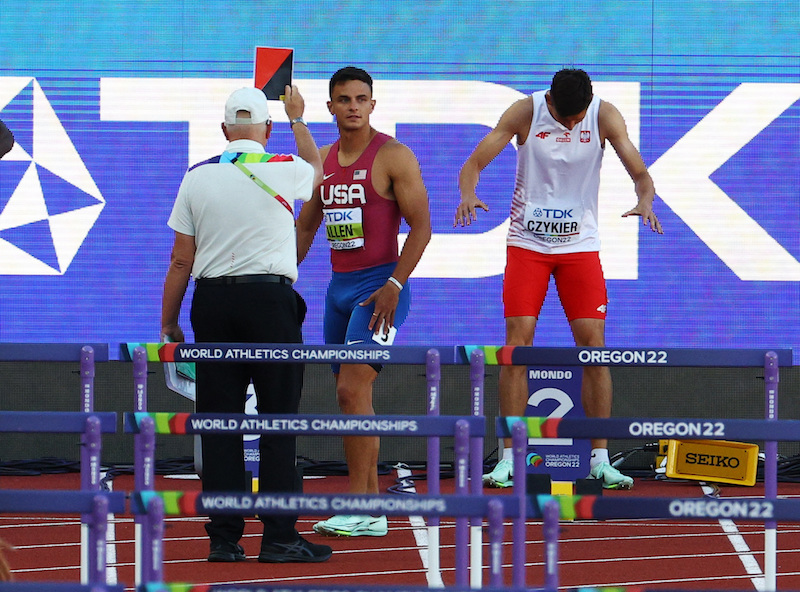World Athletics has published a summary of changes that will be implemented for the first time during the Budapest, 2023, World Championships. Some of those are good, but some other less so.
Let me start with a measure that I have always considered unfair and which now has been abolished. It concerns middle distance events typically from 1500 to 5000 m. Previously there were two possibilities to advance to a semifinal (for the 1500 m) or to the final (for 1500, 3000 st and 5000 m): either by placing among the first or by having one among the best times (the number of the later varying from 2 for the 1500 m final to 6 for the steeplechase race). This of course led to an advantage for the athletes participating in the last heat. Knowing the best times already realised they could adopt a rhythm allowing them to obtain a better time in the end of the race, regardless of their position. This has now changed, the qualification to the next round will be by place only. This is a most sensible decision and will lead to more interesting qualification races.
Another new measure is that of athlete replacement. If an athlete withdraws from a semi-final or final he can be replaced by the next best ranked one. This is a great decision. Why leave an empty lane when there is someone of (more or less) comparable value eager to fill it? Classical swimming does this since ever. It is really the sensible thing to do. But World Athletics decided to spoil a good decision by a bad one. They announced that in case of replacement there will be no re-draw of lanes or re-ordering of attempts. I can understand this for field events. After all the order is reshuffled after the first three attempts. But I cannot get the logic of nor re-drawing the lanes. If we follow the logic of WA, an athlete entering a final with the 9th time may find himself running in the best lane after the withdrawal of the one with the best time. (In case you were wondering in classical swimming it is stipulated that "whenever possible, the event must be reseeded").
Another point is that of running under protest. This is not new. It has since quite some time been possible to run under protest if the starter had some doubts concerning the false start. However if the false start was indicated by a certified start information system there was no "running under protest" possibility. But the new measure of WA is muddying the waters. Here is what they write:
When the reaction time is close to the allowed limit (0.100), any movement may hardly be visible. Now in cases such as these, if the start referee feels the start in question requires further study, the referee may allow the athlete to run under protest. For any run under protest, a final decision is taken by the referee and in turn subject to an appeal to the jury. Athletes will not be able to run under protest if the false start has been detected by a fully operational start information system or in cases where the false start is clearly visible.
OK, we all know where this is coming from. A few months back I wrote about the infamous Allen incident, where D. Allen was disqualified for a false start, the measuring apparatus showing a time one millisecond smaller than the allowed one.
Allen was denied a "run under protest" possibility, a most unfair decision. To be fair, the judges had applied the rules as they stood at the moment of the race. So, that was not a problem of the judges being too harsh: it had to do with the timorousness of World Athletics who do not dare replace the antiquated rule of 0.1 s by a more realistic one.
And so as not to finish on a negative note, here is the q-room. For races where there is still a qualification of time, i.e. for distances up to 800 m, the non-automatic qualifiers will have at their disposal a specially equipped room with comfortable chairs, TV screens, foam rollers and stretch bands, refreshments, as well as access to their coaches and kit. Spectators will be able to follow the athletes during their stay in the q-room through a tv circuit. This sounds interesting but I'll wait to see how the real q-room looks in Budapest.
If you are interested in all the (small) changes coming to the world championship, there are more details in the World Athletics article and you can find even more in the WA counsil decisions.


No comments:
Post a Comment